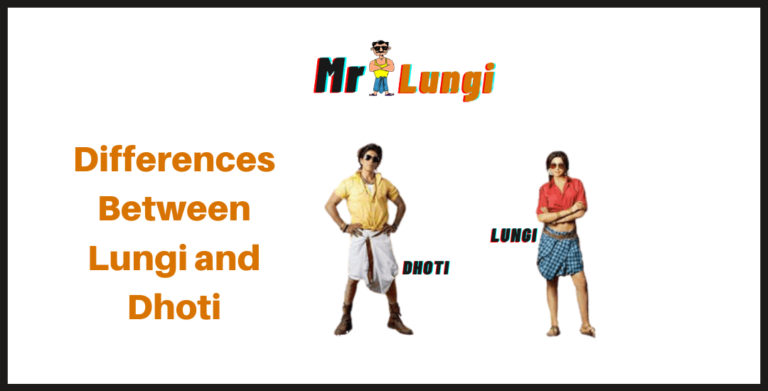Difference between lungi and Dhoti! Is that What you are looking for?
The traditional practices and lifestyle of South Indians have lots of iconic symbols; a dhoti is one of them. If you are reminded of the Lungi Dance tunes now, you would think that a dhoti and lungi should be similar. Or, even you might think lungi is the new dhoti. On the contrary, both are different, and you would be amazed to know the differences.
7 Major difference between Lungi and Dhoti
Let’s see 7 major difference between dhoti and lungi,

1. Various colored and White colored
The most striking difference between lungi and dhoti is the color. You can never find a colored dhoti. There are a few exceptions, where devotees to certain places wear colored dhotis. Saffron dhotis are the marks of devotees who visit Sabari Malai once a year.
The lungis on the contrary, are full of colors. The vibrant blue, dark brown, green are few of the choices.
2. Pattern and Plain
A lungi has several designs; flowers, checks, mini checks, boxes, and what not! You can explore the multiple designs and patterns when it comes to a lungi.
On the contrary, dhotis are plain; you won’t find any designs in this plain piece of cloth. All you can choose in a dhoti is the border, where you get plenty of options. Otherwise, any dhoti is entirely plain, in immaculate white, or dull white.
3. Casual wear and Traditional wear
A dhoti is a traditional wear, and lungi is casual wear. You can see many men choosing to wear a lungi to the local shops or for a casual stroll, but never for a professional occasion, or even for travel.
4. Non-Bordered and Bordered
Dhoti has borders at both top and bottom, on another hand lungi won’t have any kind of birders.
Lungi with its floral designs and elaborate patterns do not call for the need of the borders. In the case of dhotis, borders play a vital role; at certain places, the width of the border of your dhoti determines the importance.
The narrow or wide golden zari border of the dhoti is called Kasavu, which is predominantly worn by Keralites. It is also worn by men in other states of the Southern part of India.
5. Nightwear and Bride groom's wear
A dhoti is the main costume of the bride’s groom. There is no place for any other costume for the groom in the traditional wedding of South India. The pattern of wearing one can vary, but it is mandatory for the groom to adorn a dhoti, preferably a silk dhoti.
A lungi is nightwear for men. It is designed to be fit easily and comfortably.
6. Hollow Stitched and Long Non-Stitched:
When you compare a lungi and dhoti, the major difference that strikes the eyes is the color. Another difference that you would recognize when you get to unfold both is the stitches.
A dhoti is never stitched; it is a cloth that is long and never has any stitch. A lungi is stitched vertically to bring both ends together.
The hollow stitches in the lungi let the user gets into it and simply tie it across the waist. For this very reason, the dhoti is longer compared with the lungi, which is stitched and can be worn with ease.
7. Easy to wear and Challenge to wear
It is a real challenge to wear a dhoti that has no stitches or strings. You can see many youngsters using a belt to ensure the dhoti sticks to the waist.
There is also the Velcro dhotis designed for ease of use. A lungi is comfy and a piece of cake to wear.
Who wears lungi and dhoti mostly and why?
Rural area residents wear both dhotis and lungis. Farmers and elders in villages use dhoti for any occasion, gathering, religious events, and weddings.
Dhoti and shirt in immaculate white is the icon of politicians, most politicians consider dhoti as their uniform.
Grooms from South India have no other choice than dhoti for the wedding ceremony. People in cities and youngsters choose to wear lungi while they sleep.
Conclusion
It is never a competition between the choice of wearing a lungi or dhoti. You need to know what to wear for each occasion. When you want to bring in the majestic look, choose a dhoti, when you need to feel relaxed, a lungi comes in handy.

Hello there!!! It was wonderful to go through your blog. It is full of information and adds great values to the readers. This kind of blog helps readers like us in many ways and increases our interests. Thank you for sharing and looking forward to reading more of your blogs.
Thanks for sharing your thoughts